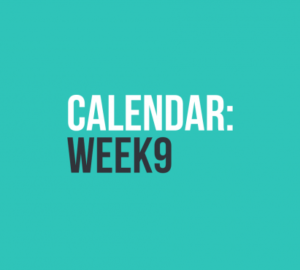School of hard rocks: Opeth, High on Fire, Baroness take Center Stage
By Matt Braddick

Turning the corner of 17th and West Peachtree, I caught sight of the droves of fans sitting patiently outside Atlanta Center Stage, eagerly awaiting the arrival of Sweden’s Opeth. It had been a comfortable kind of cool that Wednesday night, the perfect kind of weather for an outdoor show. But a band like Opeth demands a more intimate setting, an indoor venue where the band and the crowd can be hidden away from the imposing outside world, and everyone can be brought together to worship the music in peace.
Walking up the stairs then through the hallways that led to the stadium seating, I headed down to the bottom and found a comfortable spot at stage right. The opening band, Baroness, from Savannah, had already launched into their set and were in full-on attack mode. Their southern swagger prog-rock was a definite breath of fresh air. The crowd almost seemed confused or awestruck, watching this band churn out their first few songs with a harsh intensity. The guitar work fluctuated back and forth between thunderous Black Sabbath imitations and harmonious string fluttering that echoed in your head long after they left the speakers.
Eventually, once the crowd figured out what this band was about, the ground-swell reached a peak. It’s always inspiring to see the unknown openers come onto the stage and work so hard to maintain a real intensity and passion and then win the crowd over with that hard work. But Baroness made it seem like it was just another day at the office. Their natural presence and mastery of the stage was a sheer delight. Surprisingly, they earned the night’s top performer award.
Quickly following was Matt Pike’s locomotive-attitude High on Fire — a band that though they might have shared sonic similarities with the preceding band, differed completely in approach and style. A headbanger’s delight, High on Fire’s basic philosophy says that the best music waves goodbye to all the frills, and goes straight for the basics: hard-driving guitars, rough-n-gruff vocals, and the wildest, fastest solos you can belt out. They delivered on all fronts, for sure.
But fatigue and weariness seemed to be the order of the day for this band from Oakland, CA. Despite a strong and fiery start, their set seemed to lag on as the unfamiliar in the crowd grew weary for the upcoming headliner and the more devoted fans were unable to keep up the intensity. Though hats off to them for doing their job: carrying the torch for the hard rock crowd who wants to hear less of the rock and more of the hard.
Then came, as the saying goes, the moment we’d all been waiting for. The bands that had come before seemed very suited for the stereotypical rock show environment: a huddled mass of people pushing to the front of the stage, shouting and hands raised in the air in triumph. But as I looked around the demeanor of the crowd had changed it seemed. The stadium seating had been filled now, and many people sat in quiet contemplation, myself included, anticipating Opeth’s arrival on stage. Cheering continued of course, as the band walked out and began their set.
Opeth early on delivered with songs from their newest release, “Watershed” to the delight of many in the crowd and the start couldn’t have been better. The band’s energy was clear and alive from the start, and as they went from song to song that energy never faded.
Especially surprising was how extensive the chosen set list was. A band, with as long a career as Opeth’s has been, tends to sometimes abandon past material but these guys somehow managed to at least play one song from every studio album they’ve released, save 2002’s “Damnation.” One has to admire their devotion to their fan base; they give them what they want.
All that aside, after the lights had gone down I couldn’t help but wonder about the plausibility of the live Opeth show. A rousing set list and a good time was had, yes, but did it sound good? I’m afraid the results are mixed. Thicker songs like “Serenity Painted Death” and encore “The Drapery Falls” suffered from a bit of over-distortion and convolution. But others like the surprising “The Night and the Silent Water” and the always enrapturing “Bleak” soared and eclipsed with an unparalled crispness and beauty.
All these factors lead me to finally conclude that though this band’s mastery of the studio sound can’t be touched, there may be some ground for improvement in the live venue. But the band’s established connectivity with each other, along with lead singer Mikael Åkerfeldt’s crowd-pleasing humor and wit, provides a heavy metal fan’s perfect blend of aggressive attitude and near-orchestral melodies and structure.





























